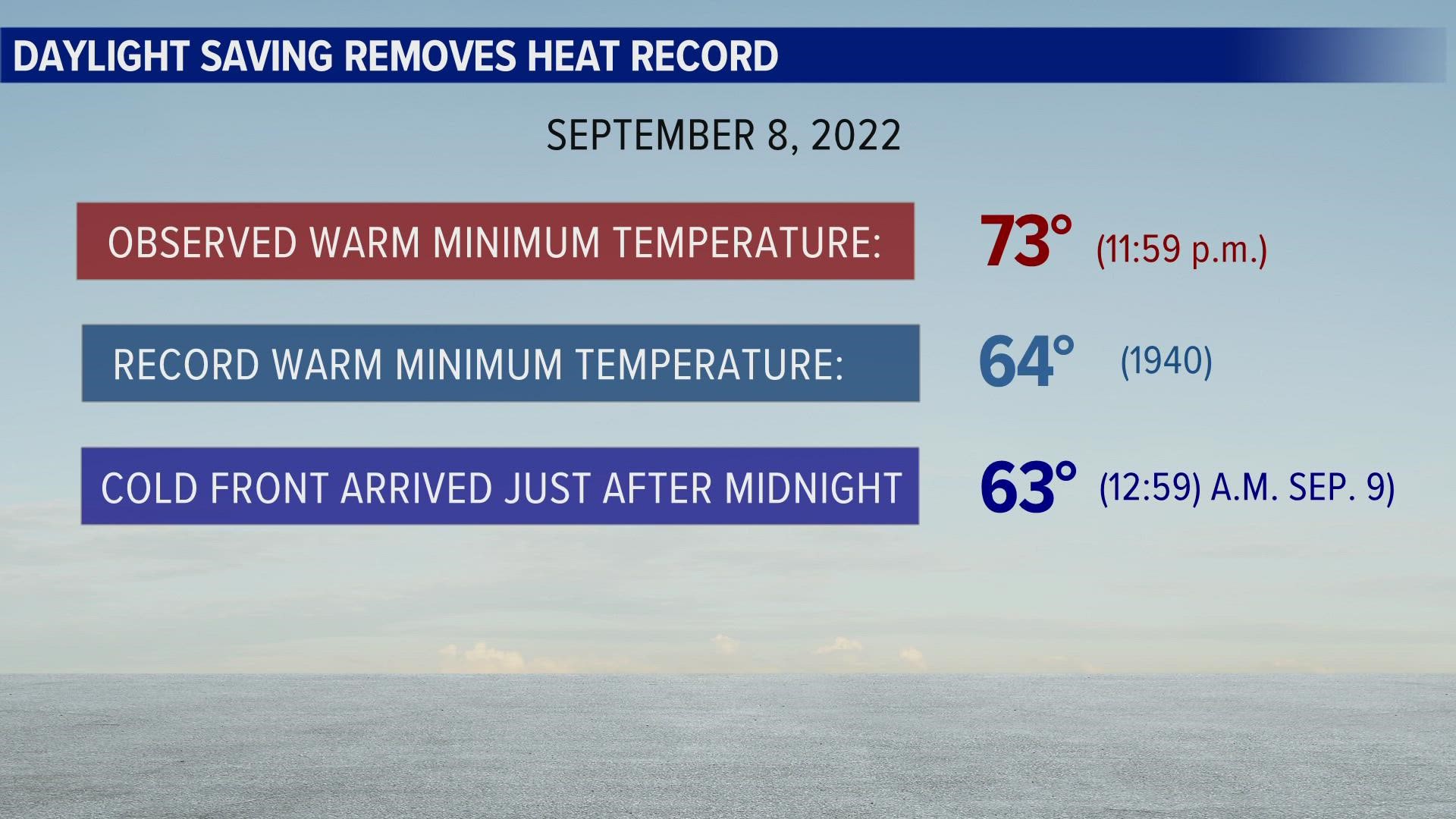DENVER — Meteorologists who forecast weather in Colorado use data that gets collected all over the planet. It comes from weather balloons, sensors on the ground and on airplanes, and even from satellites.
It’s very important to know the exact time the data is observed, because weather conditions change every minute, even every second. So meteorologists use Coordinated Universal Time (UTC), also referred to as Greenwich Mean Time or Standard Time.
That clock is synced to the prime meridian, which is zero degrees longitude. It essentially keeps all the meteorologists across the world on the same page.
UTC is used for weather record keeping even in areas like Colorado that adjust to Daylight Saving Time for part of the year.
That usually doesn’t make a huge difference, but there are cases where it creates some interesting scenarios.
For example, this September in Denver there were five heat records broken -- but if record keepers used Daylight Saving Time, there would have been six records.
On Sept. 8, the warmest low temperature of the day happened at midnight (11:59 p.m.) – 73 degrees. That would have beat the old record of 64 degrees by far.
But Colorado was in Daylight Saving Time, which means technically there was still an hour left in the day.
Well, a powerful cold front slipped through Denver just a few minutes after midnight and dropped the temperature to 63 degrees.
So, the warmest low temperature for Sept. 8 happened at 12:59 a.m. the next day for those of us on Daylight Saving, and no official record was recorded by the National Weather Service.
Also, if Daylight Saving Time was used, Sep. 8 would have been the first day in Denver history where the temperature did not drop below 70 degrees in the month of September.
That example, of course, defines the reason why we wouldn't want to switch weather records to use Daylight Saving. We don't know if there was a previous example where the low maximum temperature was warmer the 64 degrees.
And if there isn't, is it really fair to use a record that did use Daylight Saving?
The National Weather Service tries to keep continuity in their data so fair climate comparisons can be made. It's the same reason they use specific days to mark the start of the seasons, instead of equinoxes and solstices which change from year to year.
That way there will always be the same number of days in every season -- except when there's an extra day in winter during a leap year.
SUGGESTED VIDEOS: Colorado Climate

